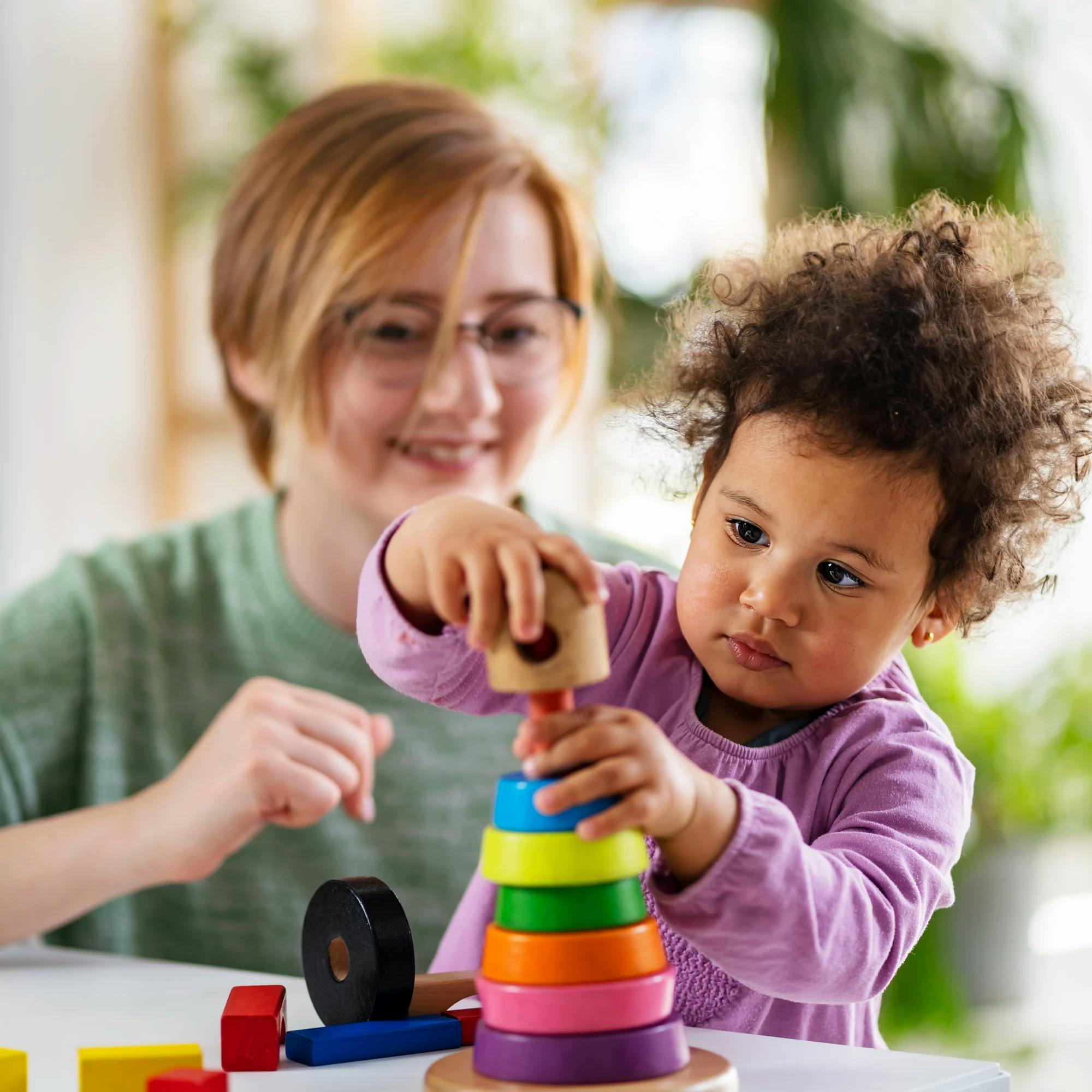
New Research: Parent Involvement Helps Autistic Children with Communication
 Abby Barnes, M.S., CCC-SLP
Abby Barnes, M.S., CCC-SLP
As speech-language pathologists, we know firsthand how powerful it is when parents practice speech and language with their kids at home. But what does the research say?
A recent study looked at the results for autistic children when their caregivers were trained in at-home interventions. Let’s walk through the study and discuss what it means for families of children with communication disorders.


Study looks at impact of parent interventions for children with autism
The number of children who need speech therapy far outweighs the number of speech therapists available. Because of this, many children spend a long time on waitlists before being able to begin speech therapy. This study, published in 2022 in the Journal of Autism and Developmental Disorders, assessed the communication progress of autistic children with parents and caregivers who were trained in at-home intervention. These children were compared with autistic children whose parents and caregivers were not trained in this intervention.
The parent or caregiver receives training from a professional in order to support their child’s continued growth and development.
What is parent-implemented intervention, also known as parent training? The parent or caregiver receives training from a professional, such as a health care provider or therapist, in order to support their child’s continued growth and development.
Parents gain these skills and knowledge through instruction, role-play, coaching, in-home practice assignments, handouts, or in-person or virtual sessions. A parent’s intervention can impact their child’s communication and social interaction, daily living skills, and behavior. It provides more opportunities for the child to practice and reinforce the skills they’re learning in therapy. And it helps strengthen the bond between parent and child as well.


What happened in the study?
Researchers began by reviewing several studies completed between 1990 and 2020. From there, they performed a meta-analysis of more than 50 studies. A meta-analysis is a research process used to combine the results of multiple scientific studies.
The researchers chose studies that looked at groups of kids and caregivers that fit the following criteria: a diagnosis on the autism spectrum, and specifics about parent involvement or lack of involvement in at-home practice. Almost 3,000 children were involved, with an average age of 5.5 years old. A total of 43 studies (84%) involved both mother and father, 6 studies (12%) involved only the mother, and 2 (4%) involved parents and other caregivers.
What aspects of autism and communication did the studies look at?
Twelve studies assessed improvements in the children’s social skills, 8 studies looked at behavioral issues, and 6 targeted overall language and communication skills. Twenty-five studies were mixed in what they assessed, with most addressing both social/positive behaviors and language/communication.


What were the study findings?
On average, parents received around an hour and a half of intervention training each week. When assessing groups of children whose parents were trained in intervention versus those not trained in intervention, the outcomes suggested favorable results for the autistic children with at-home intervention.
There is no scientific justification to not train parents... It has a potentially remarkable impact on child outcomes.
The studies found notable improvements in the children’s social skills, as well as their language and communication abilities. These improvements were assessed through direct observation by a professional, as well as parent and observer ratings.
As study author Timothy B. Smith explained, “There is no scientific justification to not train parents. A parent can constantly reinforce social behaviors if they know what to look for and how to do it. It's about meeting the kids where they're at. It has a potentially remarkable impact on child outcomes."


How you can help your child with their speech at home
While this study specifically looked at outcomes for autistic children, parent involvement can help children with all sorts of communication needs, from speech delay to stuttering to problems speaking clearly. Speech therapists see the most progress in children whose families practice with them at home, and research backs that up.
It makes sense–your child sees their speech therapist once or twice a week, but you’re with them every day! Think about how many opportunities you have to practice their communication skills.
If your child has a speech or language issue, there are many ways you can support them at home. Take a step back and look at how your child is currently communicating–do they use sentences? Single words? Gestures? If they do speak in sentences, are their words clear and easy to understand?
Find ways to help your child communicate in a slightly more complex way so they can grow their skills. If your toddler points to what they need, you might prompt them to verbalize a sound or a simple word. Or you might prompt your child to repeat your words to help them speak more clearly.

It’s important to practice at times when your child is motivated to communicate. You can work on communication tasks when your child is trying to request a toy to play with, when they want to go outside or eat a snack, or in any other motivating situation.
Keep in mind, the goal isn’t for you to become a speech therapist! While you may be on a waitlist for speech therapy for a period of time, as soon as you’re able, schedule an evaluation with a speech therapist. They will assess how your child is currently communicating, develop a treatment plan, and explain specific ways to practice at home. Let’s talk more about this.


How do speech therapy and home practice work together?
While training caregivers to help their child is extremely important, this works best when it’s paired with formal speech therapy. Your speech therapist is the expert who can explain how and what to practice with your individual child.
After your child has had an evaluation, their speech therapy goals are established, and a treatment plan is in place, your therapist will use trial and error during speech sessions to see what type of techniques and cueing benefit your child most.
Whatever your child is working on, their speech therapist will know how to teach you what to practice at home. And if you hit roadblocks with practice, your speech therapist can assist with that, too. Likewise, when tasks get too easy, your speech therapist will move your child to more challenging goals. That’s another benefit of weekly therapy sessions–your speech therapist will be monitoring your child’s progress and adjusting their treatment plan as needed.
In the end, we want you to feel skilled and empowered to be involved in your child’s communication growth as much as possible. The partnership between caregivers and speech therapists is an important one for the child’s success.
An important note: We believe that when speaking about any community as a whole, the best approach is to prioritize that community’s voices, needs, and preferences. Within the larger autism community, the current language preference is identity-first (e.g., "autistic children"), which is why we use that language in our content. Expressable is committed to listening to and learning from the populations we serve. If and when their preferences change, we’ll adjust our approach accordingly.
How Expressable Can Help
Concerned your child isn't reaching age-expected milestones? Looking for communication support from a professional? Expressable is a national online speech therapy practice serving children and adults. We treat all major areas of communication and feeding, offer flexible hours including evenings and weekends, and accept most major health insurance plans. We’re proud to have earned more than 3,000 5-star reviews from our clients (4.9/5 average).
Our therapy model is centered on parent and caregiver involvement. Research proves that empowering caregivers to participate in their loved one’s therapy leads to better outcomes. That’s why we combine live, 1-on-1 speech therapy with personalized education and home practice activities for faster progress.
Communication is more than words. It’s how we share how we feel and show who we are. We’re here to help you or your child do just that.








